2023 Preservation Month: people saving places
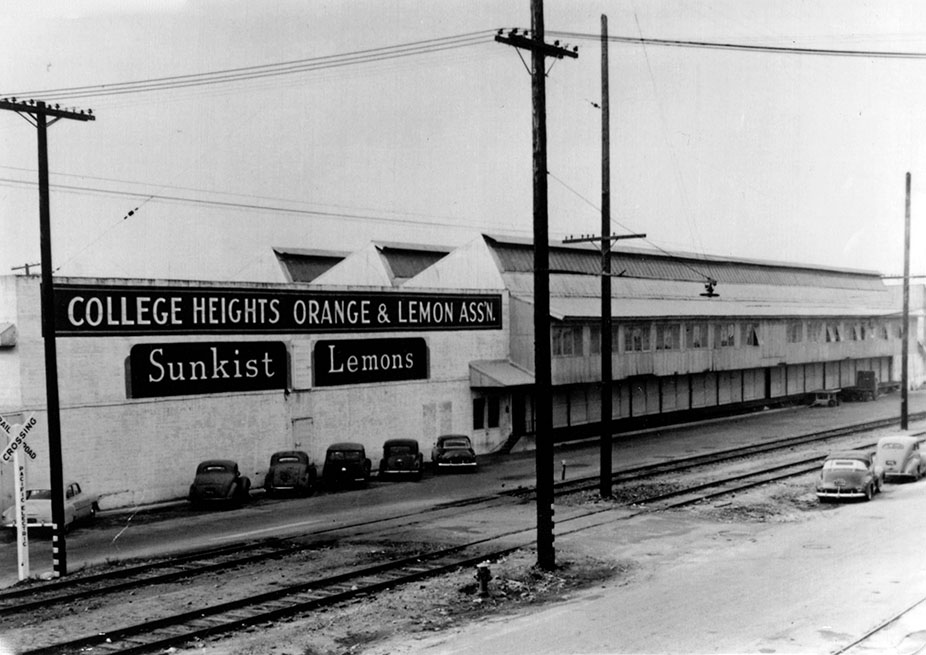
The south side of College Heights Lemon Packing House circa 1940. Photo/courtesy of Claremont Heritage
by John Neiuber
“Architecture has been called the art of building beautifully, a fixation of man’s thinking, and record of his activity … Keep in mind that last phrase. It is important.”
— Ernst Johnson, architect
Place — a simple word but full of meaning. Place is where our lives begin and where the chapters of our life stories are written. We connect memories to places and we connect places to the people we encounter in each chapter of our lives. Place gives us context to which we attach emotions and feelings.
May is Preservation Month and the theme this year established by the National Trust for Historic Places is people saving places. People and places—they go hand in hand. Consider the buildings in Claremont that have been saved and we enjoy today.
The building that always comes to mind first for me is the Santa Fe Depot. It is architecturally stunning and a fine example of the Spanish Colonial Revival style, with its thick stucco walls, wood grille windows, red tile roof, and Moorish arches, and it is on the National Register of Historic Places. The simple stucco building is highlighted by the unique Churrigueresque ornamentation — Spanish baroque ornamented rococo decorations used in Spain and Spanish colonies — named after the architect Jose Benito Churriguera (1665-1725) and constructed of cast concrete.
This 1927 structure replaced the original 1887 wooden Victorian station that was a block west at Indian Hill Boulevard. Santa Fe Railroad closed the Depot in 1967. It remained vacant until 1990, when the City of Claremont purchased the building and restored it to its 1920s splendor, to serve as a transit center for Metrolink commuter trains and a regional bus system. It now serves as home to the Claremont Lewis Museum of Art.
The Spanish Revival architecture of the Depot was also the inspiration for many other buildings in town. The Depot served as the gateway to the town. One arrived by rail and walked up Harvard Avenue to the civic center. The city hall, original library, and the post office were all designed in complementary styles. First Street was home to many Spanish Mission style buildings.
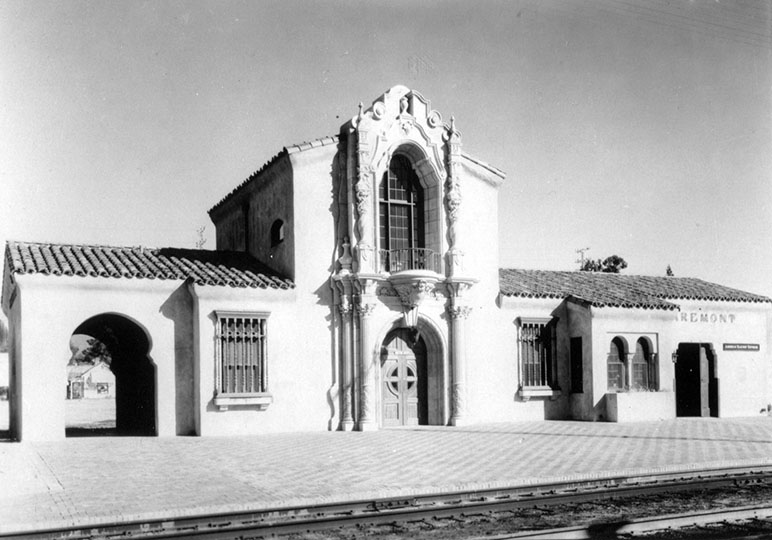
The 1927 Santa Fe Depot was built by the Santa Fe Railroad. The Santa Fe logo is depicted on the doors with trim and glass. Photo/courtesy of Claremont Heritage
That history reminds us of two things; first, the fact that the building is still there is all about “people saving places.” Judy Wright, preservationist, author, City Council member and mayor, was the key advocate for saving the building. Secondly, it reminds us of those buildings that have been lost, including the original Depot along with many Victorian structures, and the Spanish Revival buildings that were once so prevalent.
In the early days there were two major contributors to the economy of Claremont. One, of course, was Pomona College and the colleges that followed, and the other was the citrus industry. Four packing houses once lined the railbed. One remains today, adaptively reused as a mixed-use development. The building is a source of pride for the community, and it is a draw for heritage tourism that is now a major contributor to the Claremont economy. Just up from the Packing House is a Spanish Mission style building that houses The Back Abbey. This building was once the office of the Union Ice Company. The quaint structure sits between an art deco themed theatre and a hotel designed with a nod to the Spanish Revival style.
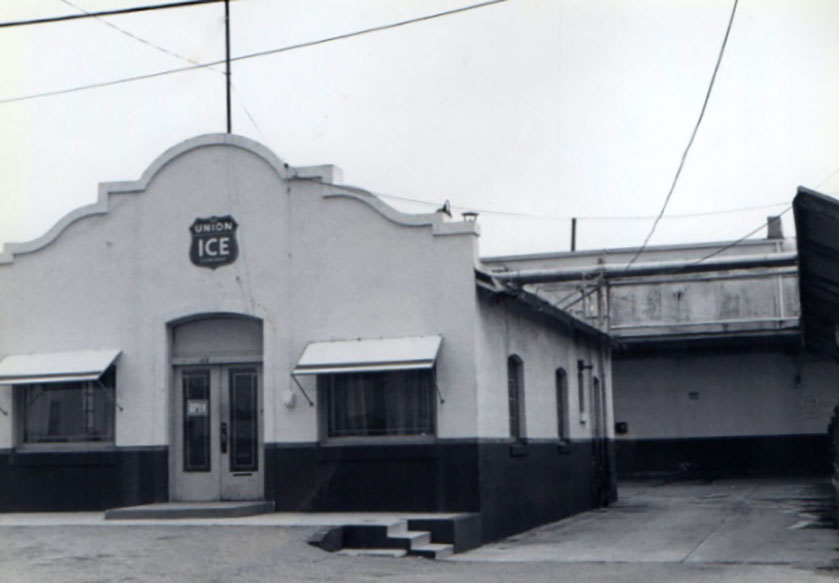
The Union Ice House office is now The Back Abbey restaurant. Photo/courtesy of Claremont Heritage
What these two buildings have in common is that they were slated for the wrecking ball. However, it was “people saving places” that came into play. Claremont Heritage, concerned citizens, and local elected officials came together to form a coalition to save the structures and adaptively reuse them. Because of these efforts, we have a connection to our citrus past.
It has been said the greenest building is the building that is already in place. Each building from the past has embodied energy that if demolished is relegated to a landfill, where all the original energy to build it is lost forever. Donovan Rypkema of Place Economics said, “Rehabilitating historic buildings and using the infrastructure that is already in place to serve them is the height of fiscal and environmental responsibility.”

This photo of the Huntley Bookstore shortly after construction shows the beam and trellis that have now been restored by the Claremont Graduate University as its new Yuhaaviatam Center for Health Studies. Photo/courtesy of Claremont Heritage
Educational institutions in Claremont play a vital role in saving places. It is, of course, the leaders in those institutions who step up and advocate for saving buildings. Claremont Graduate University recently displayed the height of fiscal and environmental responsibility by adaptively reusing the former Huntley Bookstore for the Yuhaaviatam Center for Health Studies. The Huntley Bookstore was designed by renowned Southern California architect, A. Quincy Jones. The iconic mid-century design and the embodied energy would have been lost if it had been demolished and replaced with a new building.
Claremont owes so much to the people who save the places that connect us to our past and inspire our future.



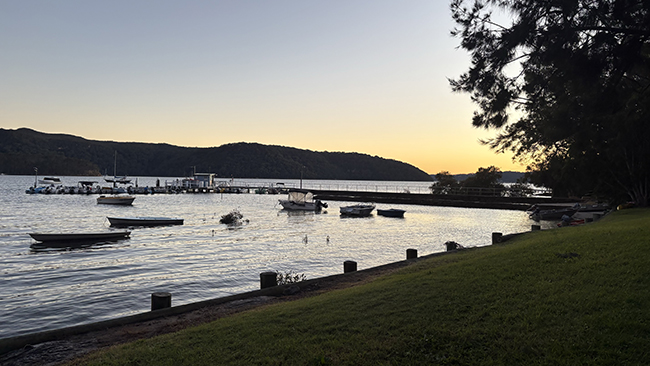
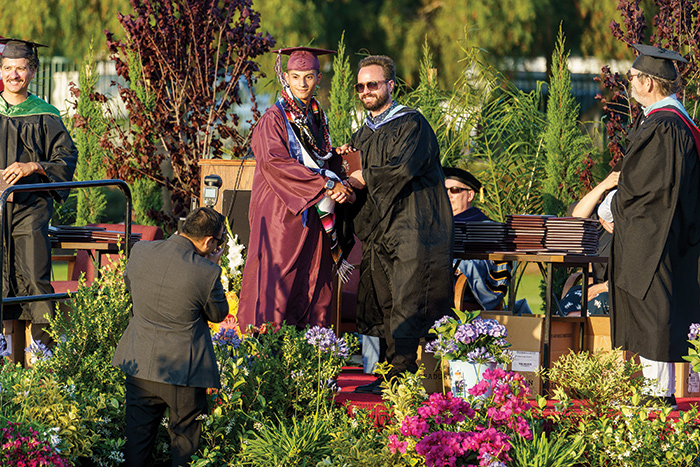
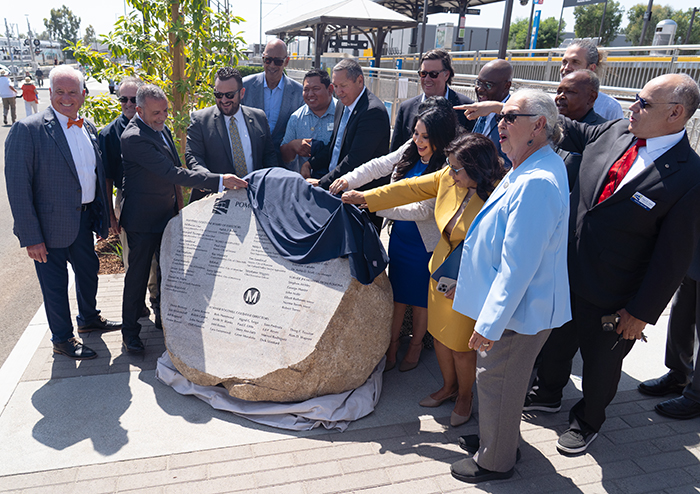
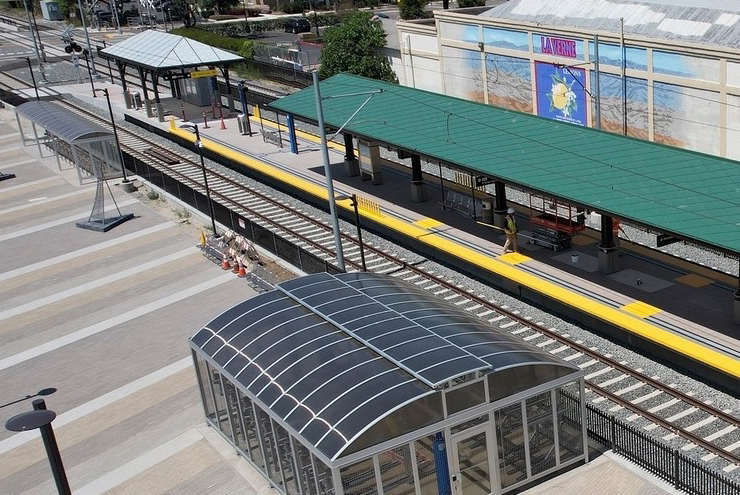



0 Comments